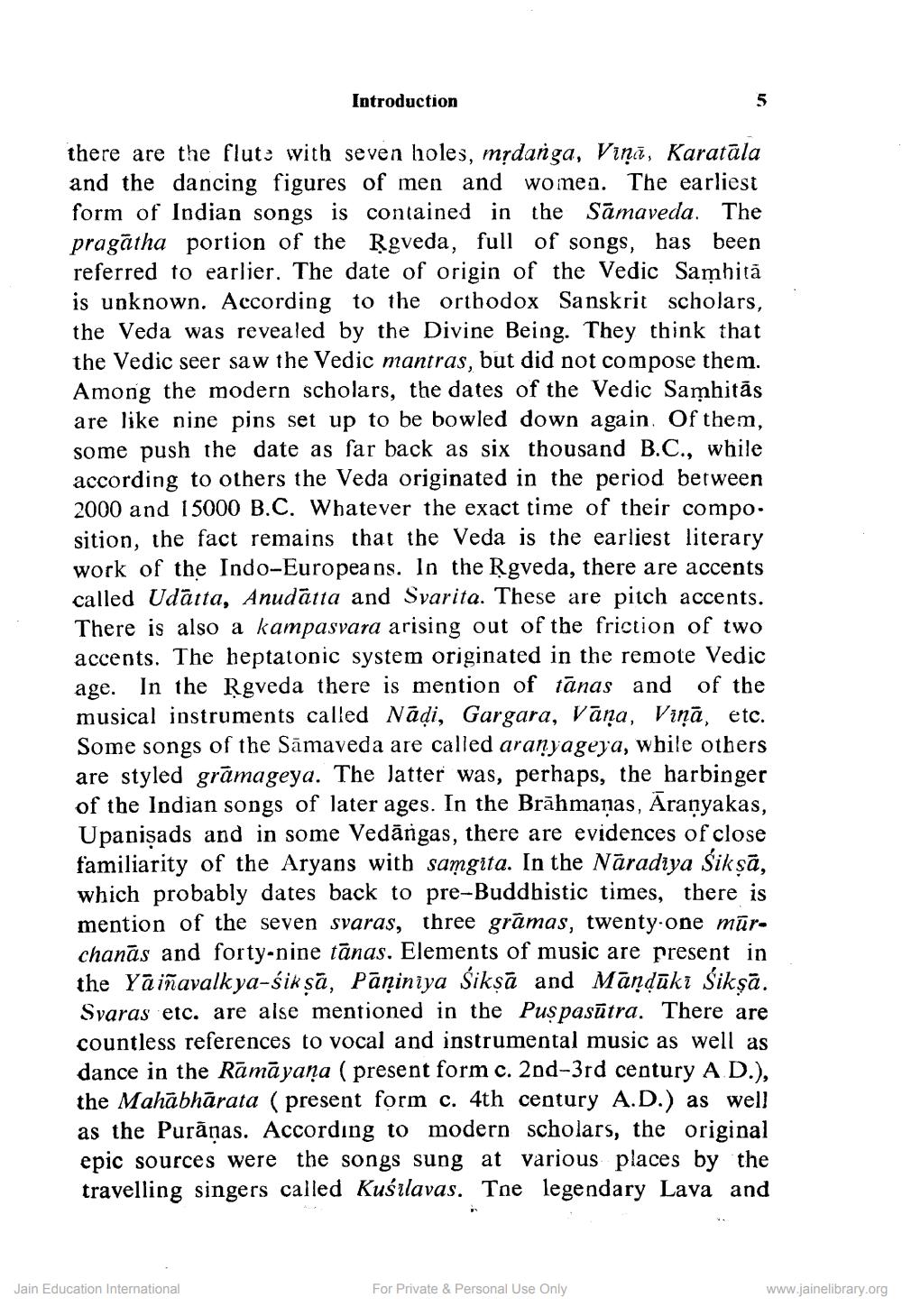________________
Introduction
there are the flute with seven holes, mặdanga, Vīņā, Karatāla and the dancing figures of men and women. The earliest form of Indian songs is contained in the Sāmaveda. The pragātha portion of the Rgveda, full of songs, has been referred to earlier. The date of origin of the Vedic Samhita is unknown. According to the orthodox Sanskrit scholars, the Veda was revealed by the Divine Being. They think that the Vedic seer saw the Vedic mantras, but did not compose them. Among the modern scholars, the dates of the Vedic Samhitas are like nine pins set up to be bowled down again. Of them, some push the date as far back as six thousand B.C., while according to others the Veda originated in the period between 2000 and 15000 B.C. Whatever the exact time of their compo. sition, the fact remains that the Veda is the earliest literary work of the Indo-Europeans. In the Rgveda, there are accents called Udātta, Anudātta and Syarita. These are pitch accents. There is also a kampasvara arising out of the friction of two accents. The heptatonic system originated in the remote Vedic age. In the Rgveda there is mention of tānas and of the musical instruments called Nādi, Gargara, Vāņa, Viņā, etc. Some songs of the Sāmaveda are called aranyageya, while others are styled grāmageya. The latter was, perhaps, the harbinger of the Indian songs of later ages. In the Brāhmaṇas, Āranyakas, Upanişads and in some Vedārgas, there are evidences of close familiarity of the Aryans with samgita. In the Nāradiya Śikṣā, which probably dates back to pre-Buddhistic times, there is mention of the seven svaras, three gramas, twenty-one mūrchanās and forty-nine tānas. Elements of music are present in the Ya iñavalk ya-śik sā, Pāṇiniya Śikṣā and Māņdūkı Sikşā. Svaras etc. are alse mentioned in the Puspasūtra. There are countless references to vocal and instrumental music as well as dance in the Rāmāyaṇa ( present form c. 2nd-3rd century AD.), the Mahābhārata (present form c. 4th century A.D.) as well as the Purāņas. According to modern scholars, the original epic sources were the songs sung at various places by the travelling singers called Kuśilavas. Tne legendary Lava and
Jain Education International
For Private & Personal Use Only
www.jainelibrary.org




